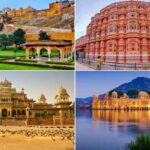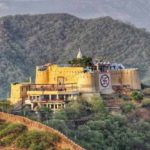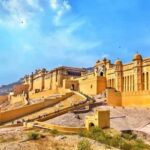History Of Jaipur, the capital of Rajasthan, was founded in 1727 by Maharaja Sawai Jai Singh II, a visionary ruler and an accomplished astronomer. Before Jaipur’s establishment, the Kachwaha Rajputs ruled from Amber, a nearby town that eventually became insufficient for the kingdom’s growing needs. To address these challenges, Jai Singh decided to create a new, strategically planned city.
Jaipur is one of India’s earliest planned cities, designed according to Vastu Shastra, an ancient Hindu architectural science. The city was laid out in a grid pattern with wide streets and organized into nine blocks, each designated for specific purposes like markets, residences, and palaces. The city was fortified with walls and gates for protection.
Jaipur earned the nickname “Pink City” after being painted pink in 1876 to welcome the Prince of Wales, a color symbolizing hospitality. The city is renowned for its architectural marvels, including the City Palace, Hawa Mahal, Jantar Mantar (an astronomical observatory), and the nearby Amber Fort.
Under British rule, Jaipur underwent modernization, with the introduction of schools, hospitals, and infrastructure. After India’s independence in 1947, Jaipur became the capital of Rajasthan. Today, it is a vibrant cultural hub, celebrated for its rich history, traditional arts, and festivals.
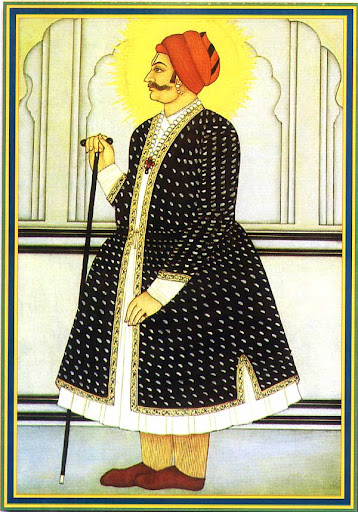
History of Jaipur Royal Family
The history of the Jaipur Royal Family is intricately tied to the history of Rajasthan and is one of the most illustrious in India. The Kachwaha Rajputs, the ruling dynasty of Jaipur, trace their origins back to the Sun Dynasty (Suryavanshi) and are believed to have migrated from Gwalior to the region of Dhundhar (present-day Jaipur) around the 11th century. Over the centuries, they established themselves as powerful rulers, with their capital initially at Amber before moving to Jaipur.
Early History: The Kachwaha Dynasty
The Kachwahas established their rule in the Dhundhar region under the leadership of Duleh Rai, who captured the fort of Amber in the 11th century. Amber remained the capital of the Kachwaha dynasty for several centuries. The dynasty gradually expanded its territory and influence, forging alliances with the powerful Mughal Empire History Of Jaipur.
One of the most significant alliances was established during the reign of Raja Bharmal, who ruled Amber in the 16th century. Bharmal’s daughter, Jodha Bai, married the Mughal Emperor Akbar, solidifying the Kachwaha dynasty’s position within the Mughal empire. This alliance brought considerable benefits to the Kachwahas, including military support and administrative responsibilities under the Mughal rule.
Maharaja Sawai Jai Singh II: The Visionary Founder of Jaipur
The most famous ruler of the Jaipur royal family is Maharaja Sawai Jai Singh II (1688-1743). He ascended the throne of Amber in 1699 and became known for his intellectual pursuits, especially in astronomy, mathematics, and architecture. Jai Singh was deeply interested in science and was a patron of the arts and culture. His reign marked a golden era for the Kachwaha dynasty.
Jai Singh founded the city of Jaipur in 1727, moving his capital from Amber due to water scarcity and population growth. He meticulously planned Jaipur, incorporating principles of Vastu Shastra and Shilpa Shastra, creating a well-organized city with a grid system. He also constructed the Jantar Mantar observatory in Jaipur, which is now a UNESCO World Heritage Site.
The 19th and Early 20th Centuries: Modernization and British Influence
During the 19th century, the Jaipur royal family maintained a relatively autonomous position under British suzerainty. Maharaja Sawai Ram Singh II (1835-1880) is remembered for his efforts to modernize the state. He introduced reforms in education, health, and infrastructure. He also adopted the pink color for Jaipur’s buildings in 1876 to welcome the Prince of Wales, earning the city its famous nickname, “Pink City.”
His successor, Maharaja Sawai Madho Singh II (1880-1922), continued these modernization efforts. He established schools, hospitals, and public buildings, and introduced electricity and a railway line to Jaipur. Madho Singh II was also known for his diplomatic skills and was instrumental in maintaining Jaipur’s autonomy within British India.
Maharaja Sawai Man Singh II: The Last Ruler Before Independence
Maharaja Sawai Man Singh II, who ruled from 1922 to 1970, was the last reigning monarch of Jaipur before India’s independence in 1947. He was a progressive ruler who focused on education, health, and infrastructure development. He also represented Jaipur in various international forums and was known for his diplomatic acumen.
Man Singh II played a significant role in the integration of Jaipur into the Indian Union after independence. He agreed to merge Jaipur with the newly formed state of Rajasthan in 1949, and Jaipur was declared the capital of Rajasthan.
The Present: The Jaipur Royal Family Today
After the abolition of princely states in 1949, the Jaipur royal family lost its official ruling power but retained significant influence and wealth. The family remains highly respected in Rajasthan and across India. The current head of the family is Maharaja Sawai Padmanabh Singh, born in 1998, who was adopted as the heir by his grandfather, Maharaja Bhawani Singh, the last titular Maharaja of Jaipur.
Padmanabh Singh, often referred to as “Pacho,” has taken on the ceremonial and cultural duties associated with his royal status. He is also known for his interest in polo and has represented India in international tournaments. The family continues to reside in the City Palace of Jaipur, a major tourist attraction, and plays a significant role in preserving the heritage and cultural traditions of Jaipur.
The Jaipur royal family, with its rich history and legacy, continues to be a symbol of Rajasthan’s royal past, embodying the region’s cultural and historical richness.
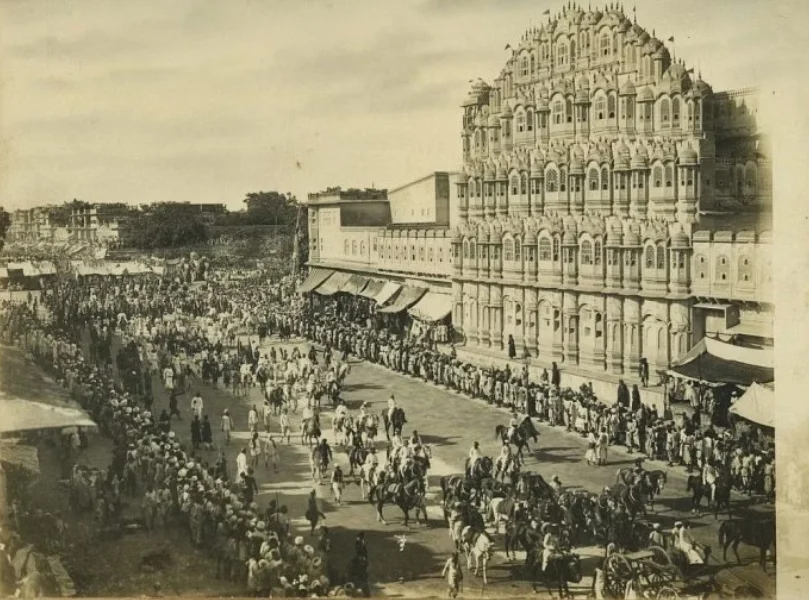
Why Jaipur is known as Pink City?
Jaipur is famously known as the “Pink City” due to the distinctive pink color of its buildings, which has become a defining characteristic of the city. This unique tradition dates back to 1876 when the city was preparing for a visit by the Prince of Wales, who would later become King Edward VII.
To welcome the royal guest and demonstrate hospitality, Maharaja Sawai Ram Singh II ordered that the entire city be painted pink, a color associated with warmth and hospitality in Indian culture. The Maharaja’s decree applied to all buildings within the city’s old quarters, and the tradition has been maintained ever since History Of Jaipur.
The pink color was chosen for practical reasons as well. In the late 19th century, lime plaster was used to coat the buildings, and adding a natural pigment derived from minerals and soil gave the plaster its pink hue. This was a cost-effective and durable solution that suited the city’s climate.
To this day, the law mandates that buildings in the old city must be maintained in this pink color, preserving Jaipur’s distinctive and historic appearance. This practice has contributed to Jaipur’s identity as the “Pink City,” attracting tourists from around the world to experience its unique charm.
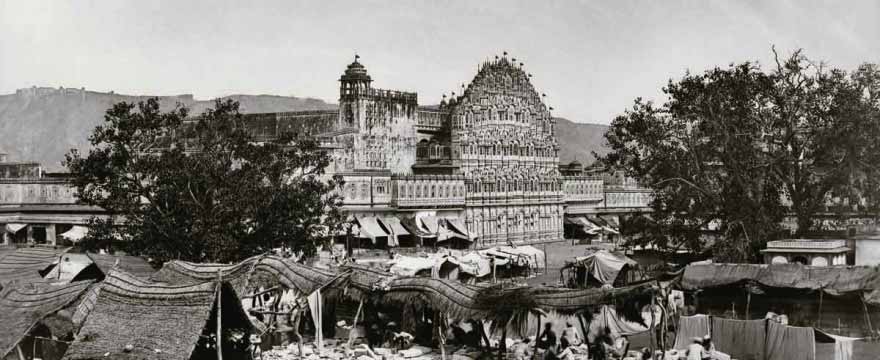
A Pink Paradise That Was Ahead of Its Time
As a newcomer to the city, the first thing you’ll see is all the pink. But look more closely, and you’ll start to see a myriad of beautiful shades, from pastel pinks to reddish browns. You’ll also notice the striking symmetry of the city. Many of the Jaipur’s buildings were designed in the Rajasthani architectural style, which blends Hindu Rajput building techniques with the symmetrical Mughal style.
Jaipur was also a city that was ahead of its time, as it was India’s first planned city. When Maharaja Sawai Jai Singh II founded the city in 1727 as Rajasthan’s capital, he designed the streets on a grid, using early urban planning principles. Today you’ll find that the streets of Jaipur are a pleasure to navigate, with wide main streets running north-south and east-west History Of Jaipur.
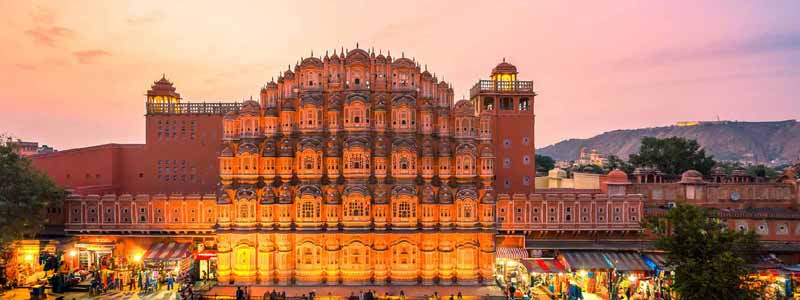
The Most Famous Pink Buildings in Jaipur
Jaipur, the “Pink City,” is home to several iconic pink buildings that not only define the city’s architectural landscape but also reflect its rich history and cultural heritage. Here are some of the most famous pink buildings in History Of Jaipur:
Hawa Mahal (Palace of Winds)
Perhaps the most iconic pink building in Jaipur, Hawa Mahal was built in 1799 by Maharaja Sawai Pratap Singh. This five-story palace features 953 small windows or “jharokhas” adorned with intricate latticework. The purpose of this design was to allow the royal women to observe street life and festivals while remaining unseen, adhering to the purdah system. The honeycomb structure of Hawa Mahal, painted in pink and red sandstone, makes it one of the most photographed buildings in Jaipur.
City Palace
Located in the heart of Jaipur, the City Palace was built by Maharaja Sawai Jai Singh II when he moved his capital from Amber to Jaipur. The complex is a blend of Rajput, Mughal, and European architectural styles, and it remains partially occupied by the royal family. The palace’s pink facades, particularly the outer walls and some inner structures, reflect the traditional color scheme of the city.
Jantar Mantar
Jantar Mantar, an astronomical observatory built by Maharaja Sawai Jai Singh II in 1734, is another UNESCO World Heritage Site located in Jaipur. While its large stone structures are primarily in neutral tones, the surrounding buildings and the entrance gates within the observatory are painted in the city’s signature pink, blending with the overall aesthetic of Jaipur.
Albert Hall Museum
The Albert Hall Museum, also known as the Central Museum, is another prominent pink structure in Jaipur. Built-in 1887, the museum is an excellent example of Indo-Saracenic architecture, which combines Indian and European styles. The building’s pink facade, along with its beautiful arches and domes, makes it a standout landmark in the city. The museum houses an extensive collection of artifacts, including paintings, carpets, and ancient weapons, History Of Jaipur.
Jawahar Circle
Jawahar Circle is one of the largest circular parks in Asia, and while the park itself is known for its lush greenery and musical fountains, the entrance gate, known as the Patrika Gate, is a stunning pink structure. The gate is adorned with intricate artwork depicting various aspects of Rajasthani culture, including its forts, palaces, and temples. The vibrant pink color of Patrika Gate has made it a popular spot for photography and a symbol of Jaipur’s artistic heritage.
Bapu Bazaar
Bapu Bazaar is one of Jaipur’s bustling markets, famous for its traditional Rajasthani textiles, jewelry, and handicrafts. The buildings that line the market streets are painted in Jaipur’s characteristic pink color, giving the bazaar a unique and inviting atmosphere. The pink facades of the shops and the vibrant goods on display make Bapu Bazaar a must-visit for anyone exploring the Pink City.
Amer Fort
Though Amer Fort is primarily constructed from pale yellow and pink sandstone, it is intrinsically linked to Jaipur’s pink identity. Located just outside Jaipur, the fort was the original seat of the Kachwaha rulers before they moved to the City Palace. The fort’s massive walls and beautifully decorated interiors showcase a blend of Rajput and Mughal architecture. While the fort itself is not entirely pink, sections of the outer walls and some of the inner courtyards reflect the pink hue associated with History Of Jaipur.
How to Reach Jaipur Pink City
Jaipur, the Pink City, is well-connected by various modes of transportation, making it accessible from different parts of India and beyond. Here’s how you can reach Jaipur:
By Air : Jaipur International Airport (JAI) is about 13 kilometers from the city center. It handles both domestic and international flights. Major airlines offer frequent flights from cities like Delhi, Mumbai, Bengaluru, and more. From the airport, you can take a taxi or use ride-sharing services to reach your destination in Jaipur.
By Train : Jaipur Junction is a major railway hub with excellent connectivity to other cities. It is well-served by numerous trains, including express and superfast trains, from cities such as Delhi, Mumbai, and Kolkata. The station is centrally located, and you can easily find taxis or auto-rickshaws for local transport.
By Road : Jaipur is connected by a well-developed network of roads. National Highway 48 (NH 48) connects Jaipur to Delhi and Mumbai, while National Highway 52 (NH 52) connects it to cities like Ahmedabad and Jaipur. Private taxis, buses, and self-drive options are available for travel by road. The city has several bus services operated by both government and private operators.
By Metro : Jaipur Metro is operational and provides a convenient way to travel within the city, although it doesn’t connect directly to other major cities. The metro can be useful once you arrive in Jaipur for local commuting.
Each mode of transport offers its convenience, allowing you to choose based on your preferences and starting location History Of Jaipur.



